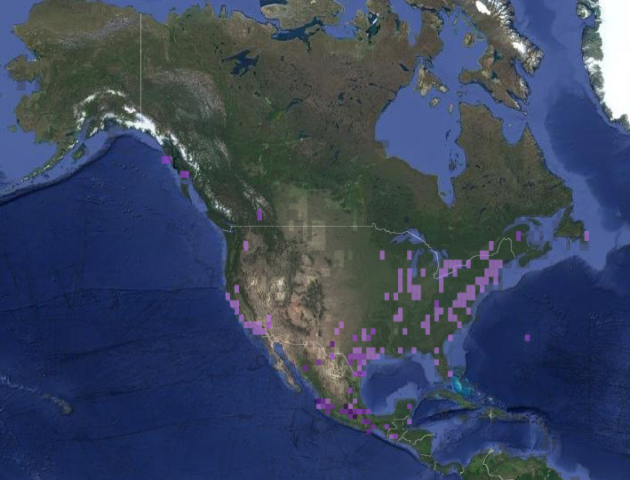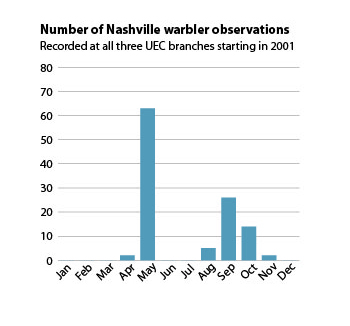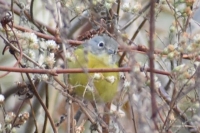Photo Credit: Nashville warbler spotted in Riverside Park on November 15, 2018. Photo by community scientist Charlotte R. Catalano.
Usually, Nashville warblers move through the U.S. between wintering habitats in Mexico and summer breeding habitats in the northern U.S. and southern Canada. For the Urban Ecology Center, that means we get to see them for a few exciting weeks each year during spring and fall migrations and it is not unusual for us to see them. Since Weekly Bird Walks began in 2001, community scientists have observed Nashville warblers 127 times across our three branches—but until last week, we never observed them in November.

Map of all Nashville warbler observations submitted to eBird during November 2018 (as of 11/20/2018). Together our Weekly Bird Walk observations combine with other community scientists all over the world to uncover where each bird species is concentrated, the timing of migration, the importance of winter, breeding, and migration stopover habitats, and change over time.
Was this fall migration season unusual for any other species? Is the population increasing making the probability of observing this species higher? Have habitat improvements in urban greenspaces like the Urban Ecology Center made this a better migration stopover site?
 Since 2001 Nashville warblers have been recorded 127 times at Urban Ecology Center greenspaces—but only twice in November and both were last week.
Since 2001 Nashville warblers have been recorded 127 times at Urban Ecology Center greenspaces—but only twice in November and both were last week.
These questions and more are one of the many reasons the Research and Community Science team continues to collect bird walk data every week. And community scientists aren’t just consulting the field guide, they are writing it. Weekly bird walks and casual observations entered into the international eBird database uncover population trends, identify migration routes and timing, and contribute observation data that wouldn’t be possible without the power of community scientists—which includes almost half a million users who have contributed over 31 million checklists! These observations are already being used by decision makers and resource managers to promote policies that conserve species and their habitats.
Thanks to community scientists volunteering their bird watching (and identification) skills on these 18°F and 34°F mornings, we were there to make the observations. It is because of their practice that the often difficult task of spotting a bird, staying quiet enough that it sticks around long enough to observe the necessary field markings (e.g., “very prominent eye ring,” “grey hood,” “yellow chest,” “sharp bill,” “white under thighs,” “olive back”), and helping the rest of the group find the bird to confirm the sighting were possible.
We invite you to join us on one of the weekly bird walks at all three branches—or participate in the Center’s Annual Christmas Bird Count on December 15th, the longest running community science research in the U.S. Even if you’ve never tried bird watching, we have binoculars you can borrow and our team of community scientists will be there to help you make your own discoveries along the way.





